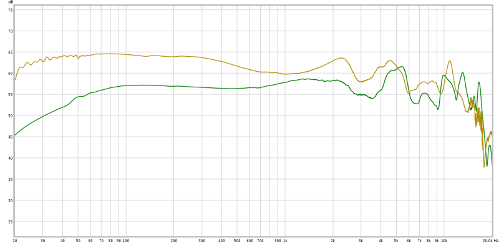symphonic
Head-Fier
- Joined
- Nov 16, 2011
- Posts
- 59
- Likes
- 10
Today I took the velour pads off of my pair of Audio Technica AD700s to clean them. I used that as an opportunity to see how they would sound with the Beyerdynamic gel pads. I was hoping for a bit of extra bass + comfort. Tweaking the Fostex T50RP has shown how important the pads are.
...I measured the response using my in ear WM61a microphone and Room EQ Wizard, driven by a Xonar DG. It was ridiculous. My head was rumbling from 20 Hz to about 400 Hz (a straight line) before the frequency response came back down to Earth. The overall sound was unbalanced but there was
I'm thinking now that Audio Technica has tweaked these to be moderately bass light on purpose. The drivers on these headphones are huge, so there's nothing to stop bass response if the pads allow it. Padless, they are bassier than the Fostex T50RP (also padless). My expectation now is that the bass can response can be extended on the AD700 by sealing the pads a bit better - either new pads or adding something to seal the sides. The huge airy sound might suffer, but it already has that in spades.
Hopefully I'll find time to play with these and post some results with different ear pads.
...I measured the response using my in ear WM61a microphone and Room EQ Wizard, driven by a Xonar DG. It was ridiculous. My head was rumbling from 20 Hz to about 400 Hz (a straight line) before the frequency response came back down to Earth. The overall sound was unbalanced but there was
I'm thinking now that Audio Technica has tweaked these to be moderately bass light on purpose. The drivers on these headphones are huge, so there's nothing to stop bass response if the pads allow it. Padless, they are bassier than the Fostex T50RP (also padless). My expectation now is that the bass can response can be extended on the AD700 by sealing the pads a bit better - either new pads or adding something to seal the sides. The huge airy sound might suffer, but it already has that in spades.
Hopefully I'll find time to play with these and post some results with different ear pads.









